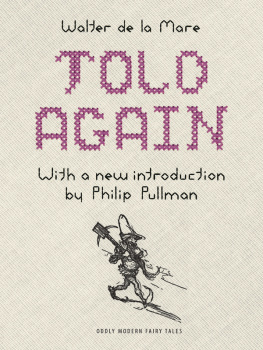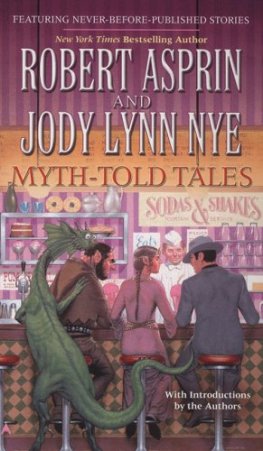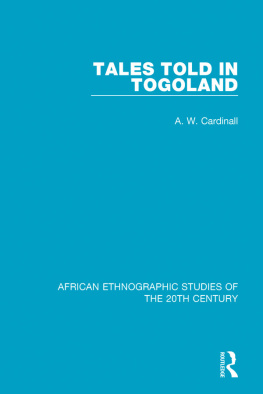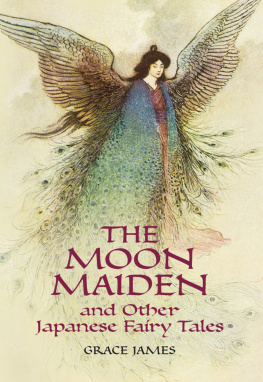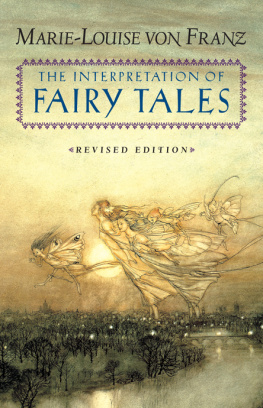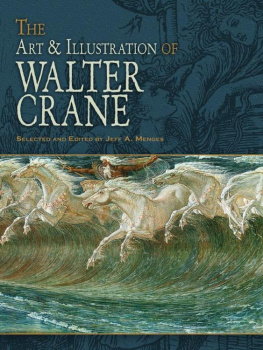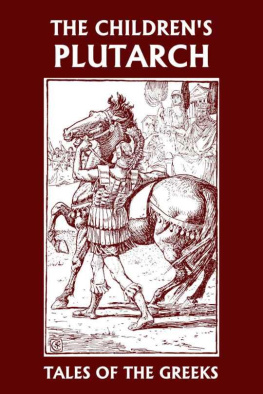
Told Again
Oddly Modern Fairy Tales
Jack Zipes, Series Editor
Oddly Modern Fairy Tales is a series dedicated to publishing unusual literary fairy tales produced mainly during the first half of the twentieth century. International in scope, the series includes new translations, surprising and unexpected tales by well-known writers and artists, and uncanny stories by gifted yet neglected authors. Postmodern before their time, the tales in Oddly Modern
Fairy Tales transformed the genre and still strike a chord.
Kurt Schwitters Lucky Hans and Other Merz Fairy Tales
Bla Balzs The Cloak of Dreams: Chinese Fairy Tales
Peter Davies, editor The Fairies Return: Or, New Tales for Old
Naomi Mitchison The Fourth Pig
Walter de la Mare Told Again: Old Tales Told Again

TOLD AGAIN
Old Tales Told Again

Walter de la Mare
With a new introduction by Philip Pullman
Illustrated by A. H. Watson

PRINCETON UNIVERSITY PRESS
PRINCETON AND OXFORD
Copyright 1927, 1955 The Literary Trustees of Walter de la Mare
Introduction copyright 2015 Philip Pullman
Requests for permission to reproduce material from this work should be sent to Permissions, Princeton University Press
Published by Princeton University Press, 41 William Street, Princeton,
New Jersey 08540
In the United Kingdom: Princeton University Press, 6 Oxford Street,
Woodstock, Oxfordshire OX20 1TW
press.princeton.edu
Jacket illustration from original edition, by A. H. Watson.
Jacket background Miro Novak/Shutterstock
All Rights Reserved
Library of Congress Cataloging-in-Publication Data
De la Mare, Walter, 18731956.
Told again : old tales told again / Walter De La Mare ; introduction by Philip Pullman ; illustrated by A. H. Watson.
pages cm. (Oddly modern fairy tales)
ISBN 978-0-691-15921-8 (hardback)
1. Fairy tales. [1. Fairy tales.] I. Watson, A. H., illustrator. II. Title.
PZ8.D37To 2014
[E]dc23
2014001028
British Library Cataloging-in-Publication Data is available
This book has been composed in Caecilia Lt Std & Adobe Caslon Pro
Printed on acid-free paper.
Printed in the United States of America
1 3 5 7 9 10 8 6 4 2
Illustrations

Told Again

Introduction
Walter de la Mares reputation these days has sunk a little from what it was in my childhood fifty years or more ago. I dare say that every British child of my age will have heard, or read, and some of them will have learned by heart, his poem The Listeners:
Is there anybody there? said the Traveller,
Knocking on the moonlit door...
It used to be a staple of every school anthology, and it is still the piece for which hes known best. In a recent attempt to revive the practice of learning by heart and recitation, the organisers of a televised contest for children in Britain included it among the poems the young contestants were invited to choose from. Some did, but it was by no means as popular as Roald Dahls coarse and derivative take on Little Red Riding-Hood. The Listeners is immensely subtle and delicate, a poem of the half-light and the silence, and if its to be recited, it needs a thinking voice thats equal to its music. I think its likely that fewer people read it now. The novelist Russell Hoban says, in an essay published in the Walter dela Mare Society Magazine (1998), Often when I mention Walter de la Mare Im astonished to find that the person Im speaking to has never read anything of his. Ive had similar experiences.
De la Mare was born in Kent, England, in 1873, the descendant of a Huguenot family. He attended St. Pauls Cathedral Choir School, and left at sixteen to work in the accounting department of the Anglo-American Oil Company, where he remained for eighteen years, marrying, raising a family, and beginning to write and publish. In 1908 he was awarded a Civil List pension, a government grant of a hundred pounds a year, which enabled him to write full-time. His novel Memoirs of a Midget (1921) made an immediate impression on critics and the public and is still in print. His short stories include some of the finest ghost stories of the twentieth century: All Hallows, for example, is to my mind unequalled. No one who has read it will easily forget the grinding sound of stone on stone in the darkness as the mysterious cathedral by the sea is repaired by... by what? The forces of evil? Reading the story, its easy to believe so.
His poetry was from the start, and remained, Georgian: almost deliberately old-fashioned in manner and style, with words like tis and twas and mid and gainst helping out the traditional versification. Along with that, though, went an ear attuned to the subtlest music, and a mind of a deeply metaphysical turn. He had admirers among those who might be expected to have quite different tastes: W. H. Auden, for example, thought very highly of his poetry, and edited a selection in 1963.
De la Mares other literary activities included the editing of anthologies. Come Hither and Behold, This Dreamer! showed his taste at work among a very wide background of reading: dreams, reveries, the twilight, the uncanny, and always the importance of the childs imagination were the substance of his preoccupations.
Told Again: Old Tales Told Again consists of nineteen folk tales, including several from Grimm, told in de la Mares firm and careful prose. It belongs pretty clearly to that class of books intended for children. The intention isnt always that of the author: booksellers and librarians need to know what shelf to put the book on, and publishers like to know how to market and sell it, and whether to commission illustrations. Authors might have a slightly different audience in minda bigger one, for examplebut if a publisher labels a book as a childrens book, thats how its likely to be seen by the reading public. Whether children themselves like such books is a different matter; if they feel theyre being patronised or talked down to, they certainly wont. Getting the tone right is an important task, second only to telling the story clearly.
Its not hard to imagine how a writer approaching these stories could get them badly wrong, especially if he or she came out of the tradition of fey and winsome fairy-talk that was so common among writers for children in the early years of the twentieth century. De la Mare gets them right.
Heres the opening of one of the tales:
Once upon a time there was a poor miller who had a beautiful daughter. He loved her dearly, and was so proud of her he could never keep from boasting of her beauty. One morningand it was all showers and sunshine, and high, bright, coasting cloudsa stranger came to the mill with a sack of corn to be ground, and he saw the millers daughter standing by the clattering mill-wheel in the sunshine. He looked at her, and said he wished he had a daughter as beautiful as she. The miller rubbed his mealy hands together, and looked at her too; and, seeing the sunbeams glinting in her hair, answered almost without thinking:
Ay! Shes a lass in a thousand. She can spin straw into gold.
Next page
